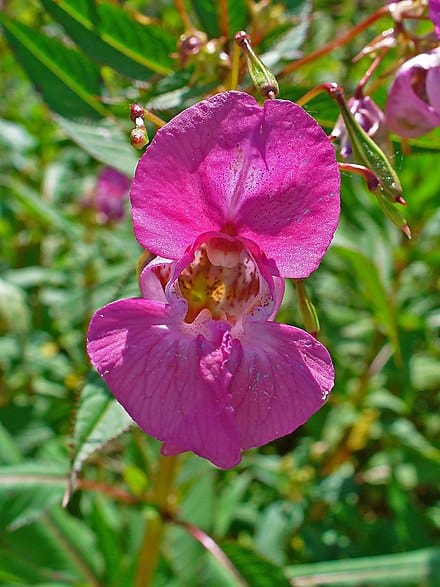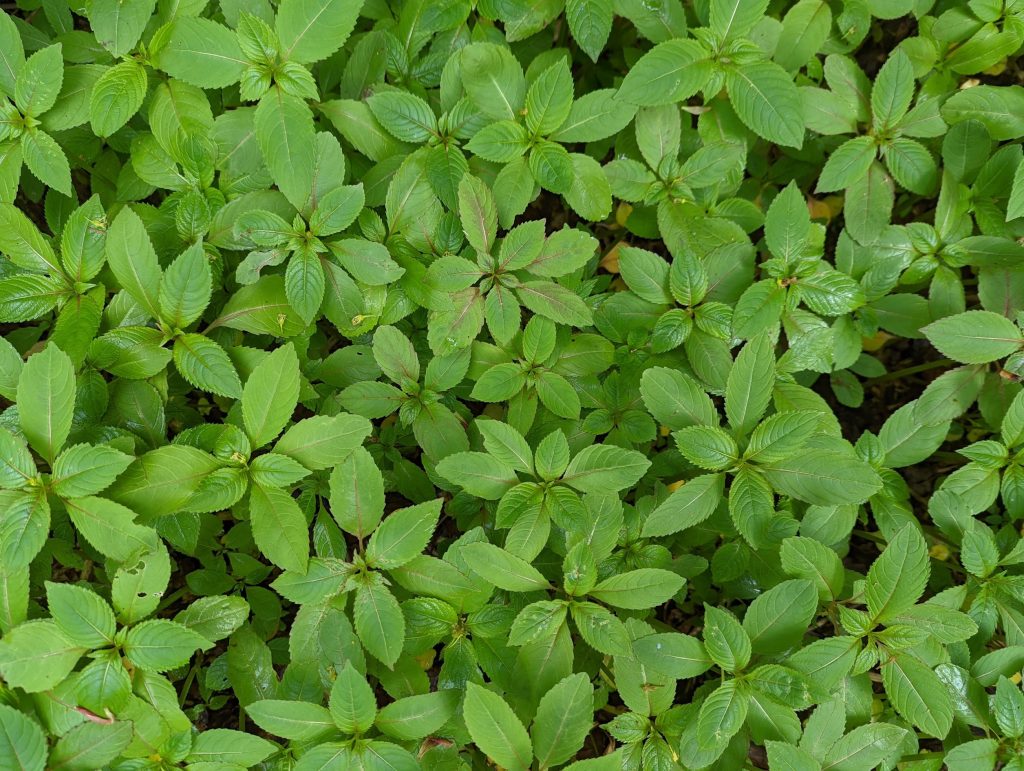As the name suggests Himalayan Balsam comes originally from the Kashmir and Uttarakhand areas of the Himalayas. It was first introduced into Kew Gardens in 1839 as an annual greenhouse plant. Being easy to grow and having attractive pink/white trumpet shaped flowers it became a very popular plant with gardeners. Within 10 years it had escaped from the confines of gardens and begun to spread along the river systems of England.
Himalayan Balsam grows very quickly and once established in an area, forms dense thickets of up to 2 meters high. Each plant can produce up to 800 seeds, the seed pods once ripe, explode shooting the seeds up to 7m away from the parent plant. If the seeds land in a waterway they float down stream before settling in soft mud banks and germinating. The seeds can remain viable for up to 2 years.

Himalayan Balsam image Wikipedia
Why do we need to control Himalayan Balsam?
It smothers native vegetation by crowding and shading out light, in the winter it dies back leaving bare earth which is then subject to erosion. This can cause major problems along river banks. The dead plant debris can block waterways causing flooding and more damage to local habitats. Being very rich in nectar its flowers attract a wide array of pollinating insects. Studies are taking place on how this effects the pollination of our native plants. Initial finding suggest that it does have a detrimental effect as reduced numbers of insects are visiting other flowering plants.

Controlling Himalayan Balsam
Being a non-native plant it has no natural enemies to keep it under control. There are two traditional ways of removing Himalayan Balsam from a site hand pulling or spraying of chemicals. The best time of year for tackling the plant is May-July, before the seeds have set. Not all sites are suitable for either of these methods and trials of introducing a rust fungus from India are currently taking place in England and Wales.
